- Administrator
- Albums and Singles
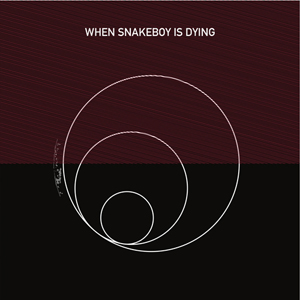 Piotrowicz's previous works have been heavily focused on his use of analog modular synthesizers, vacillating between the realms of pure noise and serious, contemplative electro acoustic compositions. On this album, however, his output demonstrates a distinctly different direction. As a whole it is lighter and more spacious, but never does it lack in its dramatic, heavier moments.
Piotrowicz's previous works have been heavily focused on his use of analog modular synthesizers, vacillating between the realms of pure noise and serious, contemplative electro acoustic compositions. On this album, however, his output demonstrates a distinctly different direction. As a whole it is lighter and more spacious, but never does it lack in its dramatic, heavier moments.
While Piotrowicz's modular synthesizer appears throughout, it is accompanied by organic instruments:guitar, piano, and vibraphone.Additionally, custom written software was utilized throughout, although for the most part the sounds mesh together to create distinctly alien tones and patterns that resemble nothing else, with only the occasional piano bit or guitar note to slip through.
The 14-plus minute "The Boy and Animal Mass" sets the tone to open the album, with expansive electronics and an understated passage of piano.Synthetic sounds slip in and out, with everything having a loose, improvised feel.Guitar and electronic strings appear, and at times there is a sense of tight structure and composition, just to slowly drift apart and float away amongst deconstructed symphonic sounds.
Both "The Bite" and "Pnemua" remain rather restrained throughout, the former trading in synthetic bells, hushed textures and shards of melody, while the latter is all fragile, glassy percussive sounds.While the bulk of this album is worlds away from his harsher moments on previous albums, these two pieces are especially distinct and quiet in their approach, even amongst the subtlety throughout this one.
"Formatio" is comparably dissonant and harsh, with precise noise strikes opening the piece and leading into a somewhat misleadingly unstructured piece.Amidst this chaos and disorienting stereo panning, Piotrowicz slips in some oddly conventional rhythmic loops to make for a wonderfully disjointed song.The closing "Snakeboy Maximus" leads back to the opening feel of unconventional electronics paired with traditional sounds.Haunting piano fragments lurk behind dissonant streaks of noise, as droning electronic and digital strings fill in the mix, building to an abrupt and dramatic conclusion.
The loose arrangement and structure to When Snakeboy is Dying may at first appear haphazard like at times, but there is more of a sculpture type quality to the recordings.There does feel like a pure sense of entropy throughout, but one that, on some grand scale, feels like pieces of a more specific plan, like any truly meaningful collage or sculpture would.
samples:
 
Read More
- Administrator
- Albums and Singles
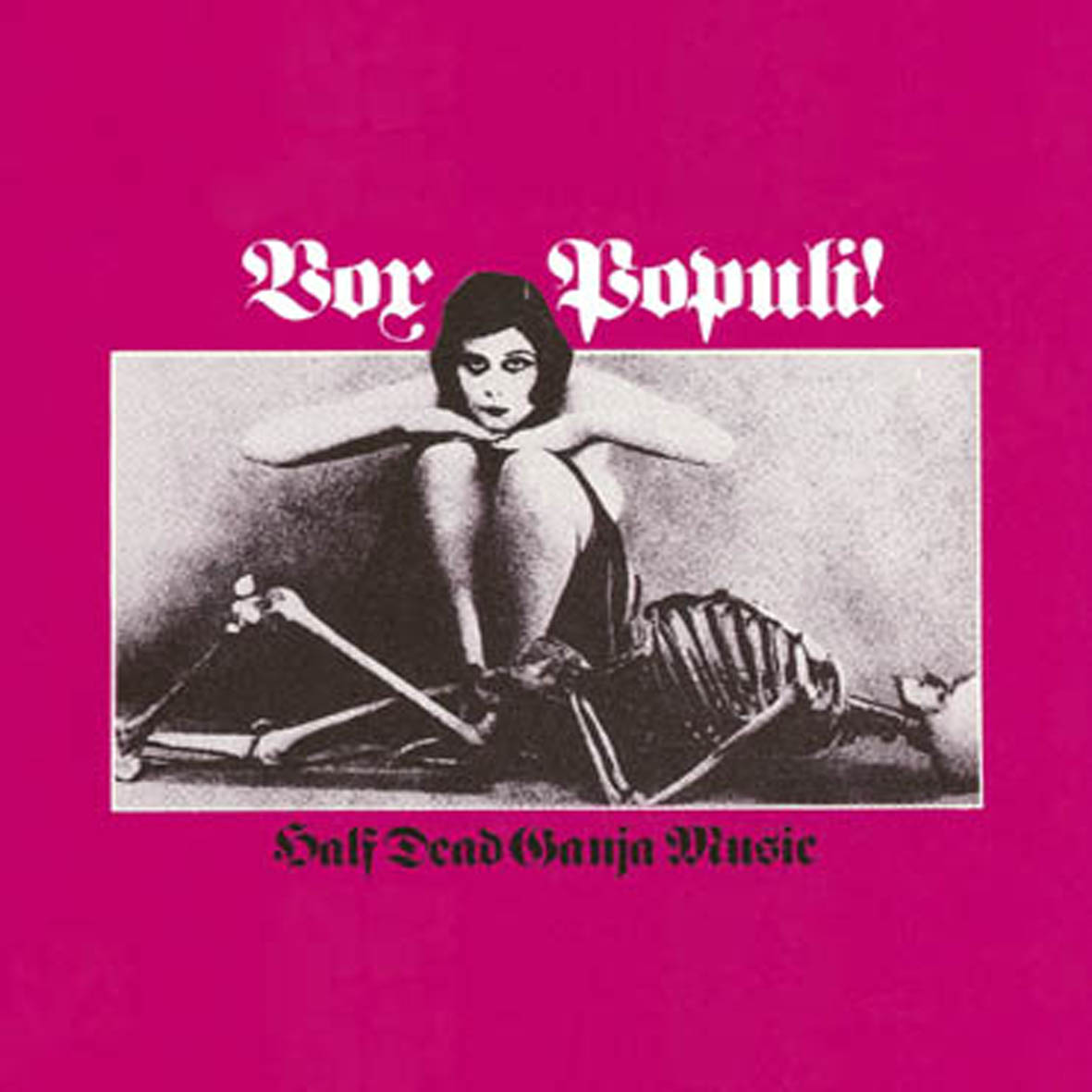 One of the great tragedies of being an experimental music fan is knowing that there was a mountain of great albums released during the cassette underground's '80s heyday that I will probably never hear.  Fortunately, this 1987 cassette (originally released on Germany's Cthulhu Records) has managed to escape obscurity through the efforts of a few great blogs and The Skaters' Spencer Clark, who has just reissued it on vinyl.  Vox Populi! are probably best known in the US for their 1989 split with HNAS, but their thoughtfully composed mixture of eerie ambient psychedelia and Persian folk could not be much further from Christoph Heemann's Dada-inspired lunacy.  I am utterly baffled as to how this band has managed to remain such a secret, as they were significantly more compelling and inventive than many of their better-known '80s contemporaries.
One of the great tragedies of being an experimental music fan is knowing that there was a mountain of great albums released during the cassette underground's '80s heyday that I will probably never hear.  Fortunately, this 1987 cassette (originally released on Germany's Cthulhu Records) has managed to escape obscurity through the efforts of a few great blogs and The Skaters' Spencer Clark, who has just reissued it on vinyl.  Vox Populi! are probably best known in the US for their 1989 split with HNAS, but their thoughtfully composed mixture of eerie ambient psychedelia and Persian folk could not be much further from Christoph Heemann's Dada-inspired lunacy.  I am utterly baffled as to how this band has managed to remain such a secret, as they were significantly more compelling and inventive than many of their better-known '80s contemporaries.
Vox Populi! began as Axel Kyrou's solo industrial project in the late '70s, but turned into something quite different after he met Iranian émigré Mithra Khalatbary and her percussionist brother Arash in the early '80s.  Since then, Axel and Mithra have been the core of a very fluid group, approximating a sort of a Parisian ethno-industrial His Name Is Alive: a beguiling mixture of weird experimentation, eccentric stylistic detours, and sublime beauty delivered by a revolving cast of characters.
In fact, VP's line-up even varies over the course of this album, as the first half is devoted to Mithra and Axel's studio recordings (with a little help from Arash and Pacific 231), while the second half is culled from a series of live performances with Francis Manne.  I am not normally a fan of live albums at all, but this one is a pleasant exception, as the live material is virtually indistinguishable from the studio material.  Also, these eleven pieces somehow cohere into quite a surreal and coherent whole that is generally considered to be one of VP's best releases by fans (and tentatively by me as well, though I have yet to fully absorb their three-decade discography).
Curiously, the 11 songs on Half Dead Ganja Music are all fairly brief, with only one clocking in at over 4 minutes.  For the most part, that was a great move, as it means that Axel's more bizarre experimental pieces end before they start to seem indulgent.  However, that brevity is a little exasperating for the lush and dream-like drone pieces like "Schmacht" and "Gole Mariam," as they end before I am able become fully immersed in them.  I suspect that sketch-like aesthetic was probably intentional, as drifting from one strange interlude to another is a large part of what makes this album such a unique and appealingly hallucinatory experience, but it would have been nice if Mithra and Axel had allowed themselves time to stretch out a bit when they hit upon something particularly beautiful or striking.  Fortunately, they hit upon such moments with surprising regularity–it seems like they had more than an album's worth of great ideas, but condensed them into a single album anyway.
The album's clear highlight is "Fassle," recorded during a 1987 performance in Ravensburg, Germany (absolutely no one rocks Upper Swabia like VP).  Built upon little more than an eerie, pulsing synth pattern and Mithra's melancholy, sacred-sounding vocals, it encapsulates everything that is great about Vox Populi! in just 3 minutes: strong, yet understated melodic sense; haunted-sounding, otherworldly beauty; uncluttered simplicity; and something that sounds a lot like heavily processed (and vaguely menacing) recordings of some ducks. "Golnessar" also reaches similar heights with similar components, combining a dense, queasily shimmering drone with more ethereal vocalizing and primal animal squawks.  As for low points, they basically do not exist: while some pieces are certainly more melodic and composed than others, the whole album is essentially a well-orchestrated and appropriately phantasmagoric mind-fuck.
My sole critiques are both quite minor ones.  The first is that there is not much in the way of development within individual songs, as each piece is basically just a single theme that starts, continues for a few minutes, then ends.  However, that same charge could easily be leveled against nearly every great post-industrial band of the period and Vox Populi!'s themes are much better and more effectively realized than most.  My other quibble is just that the sequencing could have been a bit better, as the closing abstract trilogy of "Taghmanantes/Gin Gina/Un Jour" feels like a bit of a meandering anticlimax after the brilliance of "Fassle."  However, for an album culled from a mix of studio recordings and three separate live performances, Ganja Music is still sequenced remarkably effectively.
If it gets heard, this album should go a long way towards belatedly establishing Vox Populi! as one of the best and most original bands to emerge from the shadowy post-industrial cassette milieu of the '80s, which is great, since they are still active and around to appreciate it.  In fact, it is very easy to imagine an alternate reality where Vox Populi! got signed to 4AD and became huge, as some of Ganja Music's best moments sound like a more experimental, industrial-damaged This Mortal Coil or Dead Can Dance (perhaps they should have considered doing some Big Star covers to grab Ivo's attention).  Happily, there are some rumblings of a possible Vinyl-on-Demand retrospective in the future, but this is as excellent an introduction to Axel and Mithra's aesthetic as anyone could hope for.
 
Read More
- Administrator
- Albums and Singles
 Synthpop pioneer Thomas Leer may have flirted with mainstream success in the '80s as one-half of Act (with Propaganda's Claudia Brücken), but he definitely traveled in some weirder circles as a young man, resulting in some rather interesting early career decisions.  For example, he followed his poppy and ground-breaking 1978 debut single ("Private Plane") with this full-length 1979 collaboration with aberrant fellow Scottish émigré Robert Rental on Throbbing Gristle's decidedly non-hit-minded Industrial Records.  While The Bridge has since faded into relative obscurity, both Leer and Rental were very influential figures at the time and several of these songs still sound wonderful and unique today.
Synthpop pioneer Thomas Leer may have flirted with mainstream success in the '80s as one-half of Act (with Propaganda's Claudia Brücken), but he definitely traveled in some weirder circles as a young man, resulting in some rather interesting early career decisions.  For example, he followed his poppy and ground-breaking 1978 debut single ("Private Plane") with this full-length 1979 collaboration with aberrant fellow Scottish émigré Robert Rental on Throbbing Gristle's decidedly non-hit-minded Industrial Records.  While The Bridge has since faded into relative obscurity, both Leer and Rental were very influential figures at the time and several of these songs still sound wonderful and unique today.
While "Private Plane" is certainly an appealingly catchy and moody bit of poppy post-punk, its status as a seminal moment in DIY culture stems more from Leer's process than the song's content, as he played and recorded the whole thing by himself in his bedroom (the hushed vocals were even purportedly inspired by the fact that his girlfriend was sleeping).  For his part, Robert Rental also recorded an excellent home-recorded debut single in 1978, the singular "Paralysis," which somehow blends an almost-sultry soul groove with machine noise and guitar squall, making it is easy to see how such an effort would have gained Throbbing Gristle's attention.  In fact, Rental is credited with fatefully turning both Chris Carter and William Bennett onto the EDP WASP synthesizer, which he prominently used on that 7".
Unusually, The Bridge is divided into two discrete, very different halves with the duo seamlessly trading vocal and instrumental duties throughout.  The first half occupies something of a logical middle ground between Leer's pop sensibility and Rental's quasi-industrial experimentation, yielding a handful of jittery, prickly, paranoid synthpop gems.  The best of the batch are the tensely propulsive "Monochrome Days" and the endearingly clunky and bloodless electro-blues of "Day Breaks, Night Heals."  Given the '70s-era synthesizers involved and the lo-fi recording (they borrowed an 8-track from TG), the songs necessarily sound a bit dated, but that is actually part of the appeal for me: the raw and quirky early days of synthpop were a lot of fun (Fad Gadget being another fine example).
Granted, a few of the other songs ("Attack Decay" and "Connotations") have not aged well, as they are a bit too primitive or one-dimensionally dark for my taste, but "Fade Away" stands out as another highlight.  It definitely lacks the poppiness of the side's other successful moments, but it is impressively weird and mechanized-sounding.  A lot of that is due to the duo's offbeat choice of instrumentation (all kinds of domestic appliances found their way onto the album), but they also used more conventional instrumentation in strange ways, like manually recording "percussion" loops with their synthesizers rather than using drum machines.
"Fade Away" proves to be the perfect segue into The Bridge's very different second half, as it foreshadows the duo's abandonment of song-craft in favor of abstract, industrial-damaged soundscapes and tape-loop experimentation.  Naturally, the household appliances remain a key constant, but the results are surprisingly musical, restrained, and divergent from either artist's solo work.  Of the four pieces, the warmly droning "Perpetual" stands out as the most beautiful and contemporary-sounding, but almost all are quite striking in their own ways.  In particular, "Interferon" sounds like it could be a lost classic of space-y electronic experimentation by Morton Subotnick or Silver Apples (albeit one with prominent accompaniment by a washing machine).  "The Hard Way In & The Easy Way Out" is also quite likable, conjuring up an immersively burbling and throbbing hum around the buried chatter of a television.
It is a bit of a shame that Leer and Rental never recorded extensively together again (though Leer did play on all of Rental's future solo releases), as their union was a rather visionary, synergistic, and fruitful one.  In fact, many regard The Bridge as one of the best albums that Industrial Records ever released and "Day Breaks, Night Heals" comfortably appeared alongside heavy-hitters like Can, Aphex Twin, John Cage, and Kraftwerk on Mute's epic Rough Trade: Electronic 01 compilation.  More importantly, The Bridge is the most substantial of the exasperatingly few existing documents of Robert Rental's recording career (he died in 2000), as he only surfaced again with the Double Heart 7" (1980), a very limited cassette, and as a member of The Normal (after meeting Daniel Miller at a TG show, naturally).  For his part, Leer was a bit more prolific and successful, but his recording career also came to a premature end, as he become so frustrated with record labels and Abba-sample-related legal troubles in 1988 that he completely abandoned music and vanished, though he eventually resurfaced in the early '00s and remains a very hip influence to name-check.
 
Read More
- Administrator
- Albums and Singles
 Ever since the noise community discovered synth pop and minimal wave was born, there has been an excessive influx of pseudo punks armed with TR-606s and unreliable monophonic synthesizers noodling around trying to be the Human League. The problem is that far too many emphasize the minimal part and crank out Soundcloud accounts full of boring repetition and no real sense of direction. Max Brotman and Jesse Short are one of the exceptions to this pattern, however. The fact that they are not only willing to experiment with that template, but also know how to write an actual song, put them head and shoulders amongst the multitude of their peers.
Ever since the noise community discovered synth pop and minimal wave was born, there has been an excessive influx of pseudo punks armed with TR-606s and unreliable monophonic synthesizers noodling around trying to be the Human League. The problem is that far too many emphasize the minimal part and crank out Soundcloud accounts full of boring repetition and no real sense of direction. Max Brotman and Jesse Short are one of the exceptions to this pattern, however. The fact that they are not only willing to experiment with that template, but also know how to write an actual song, put them head and shoulders amongst the multitude of their peers.
While the opening "Tunnels" at first demonstrates all of those aforementioned clichés, the vocals quickly come in and push things in this punky, catchy direction that is as much Joy Division as Front 242."White Gloves" settles into a more conventional pop structure and pace, but with intersecting layers of synth that make for a memorable song that is not just an exercise in dated technology, but one with a distinct rhythmic pulse and melodic feel.
The insistent throb of the title song brings with it a distinct Alan Vega/Martin Rev sneer without ever coming across as if the current duo were trying to sound like anyone but themselves.A personal favorite is closer "Fell Pastures," which is a fitting, dramatic closer to the album.It is a bit slower paced, but again is a great and memorable song, not just an attempt at capturing a specific sound or spirit of a past era.Overall it sounds as if it could be a lost song from Depeche Mode's A Broken Frame, albeit one of the darker tinged ones.
On the four numbered pieces, however, the duo step out of the pop comfort zone and deliver short, yet effective structured experiments with their equipment.Sparse, yes, but nuanced and varied, and "IV" especially stands out with its liquidy, flowing synths that bring with it tinges of early Skinny Puppy and Cabaret Voltaire.
Like Pure Ground, Jesse Short's project with Chondritic label head Greh Holger, this is music that clearly falls into the current trend of vintage synths and dated drum machines.However, it is not as hung up on being as sparse and minimal as those artists often are, and instead focuses on a good arrangement of sound.Simultaneously, there are also good songs to be heard on Distance Unknown.Not solely interesting sounding synths or drum machine sequences, but catchy, memorable music that captures the era it is emulating, without being unnecessarily weighed down by it.It is not posturing or just following trends, it has the right amount of nostalgia to conjure a specific, but paired with writing and composition that drives its brilliance home.
samples:
 
Read More
- Administrator
- Albums and Singles
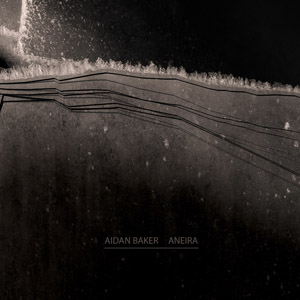 Much like my approach to Merzbow's prolific schedule, I take a similar tact when indulging in the work of Aidan Baker and Nadja. There is simply too much material coming out under those guises to stay engaged in without quickly becoming burnt out. So again, I am happy to infrequently dabble and keep my interest piqued, which is the case with both this solo release and collaboration with noted minimalist project Troum. In this case, Baker on his own may waiver, but bolstered by collaborators he does extremely well.
Much like my approach to Merzbow's prolific schedule, I take a similar tact when indulging in the work of Aidan Baker and Nadja. There is simply too much material coming out under those guises to stay engaged in without quickly becoming burnt out. So again, I am happy to infrequently dabble and keep my interest piqued, which is the case with both this solo release and collaboration with noted minimalist project Troum. In this case, Baker on his own may waiver, but bolstered by collaborators he does extremely well.
Glacial Movements/Alone At Last
Aneira is a single, 47-minute piece sourced exclusively from the use of a 12 string guitar.Baker chose not to just process the recordings but also to utilize different preparations in his playing of the instrument, to coax out sounds that bear little to no resemblance to what it began with.Early on there are hints of the source, from the occasional metallic rattle to the scraped sound of a guitar string, however the larger portion of the material is further divorced from its origins.
Most of it sticks to an undulating, understated melody that resonates throughout the entire album.At times he opts for more clichéd strategies, such as reversed playing that could have been culled from any similar ambient recording.His use of occasional clattering dissonance juxtaposed with calm passages is more effective and captivating, however, and it is on those moments where it shines.There are times where it feels it could have benefited from a bit more editing, however.
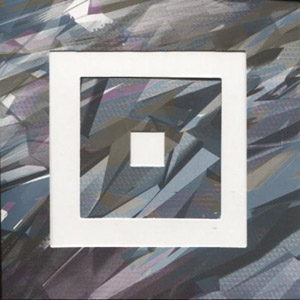
On his collaborative recording with German legends Troum, the duo add a different polish and sheen to Baker's sound that helps in spotlighting the beauty that lies within.Spread across four different songs, there is a more pronounced sense of change and development that works more in the album’s favor.Both "Nort" and "Ostan" are delicate and understated in their approach, shifting the tone color from minute to minute while retaining the calm, collected feel.The latter, however, allows some bombastic drama to rise up in its dying moments to excellent effect.
"Westan," on the other hand, leads off immediately with a darker, more aggressive sound.Instead of light, flowing moments it is bleak and at times uncomfortable and oppressive, emphasizing a sense of tension and menace that is made all the more evident via overdriven noise blasts at the end."Sunt" lies somewhere in between, via a slowly building, clean and tone-centric sound that gets a bit spiky via metallic shards and heavily processed sounds, conjuring both light and dark throughout.
While both of these albums are well done, Aidan Baker's collaborations with Troum stands out as a bit more successful, largely due to its combination of pure, distinct sounds with some occasionally ugly moments, but also in its structure of shorter pieces.Aneira is full of good ideas, but throughout its lengthy duration there does not seem to be quite as much movement or development in comparison and thus there are times where it seems to slowly drag along.However, both make for excellent parts of his expansive catalog, and definitely rank amongst the more fleshed out and fully realized works.
samples:
 
Read More
- Administrator
- Albums and Singles
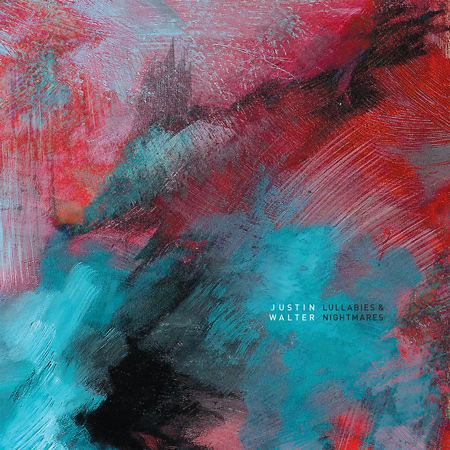 The murky depths of low-range tones are like subconscious murmurs. This kind of music speaks in so much depth, more than the imaginary space that an echo brings, or "atmospheres" built with samples and noise. Justin Walter's music is bassy, perplexing and intimate. Lullabies And Nightmares is an album which plays heavily with literal and imagined distances, where contact is always out of reach, always obscured by invariably plump electronic tones and the warmth of his ideas are paired with mechanical rigidity. It helps, too, that he has created a suite of beautiful melodies to mess with.
The murky depths of low-range tones are like subconscious murmurs. This kind of music speaks in so much depth, more than the imaginary space that an echo brings, or "atmospheres" built with samples and noise. Justin Walter's music is bassy, perplexing and intimate. Lullabies And Nightmares is an album which plays heavily with literal and imagined distances, where contact is always out of reach, always obscured by invariably plump electronic tones and the warmth of his ideas are paired with mechanical rigidity. It helps, too, that he has created a suite of beautiful melodies to mess with.
When the trumpet enters on the title track, it is probably the most distinct tone likely to be heard on the album. Lullabies And Nightmares, like its title suggests, is an argument for the fluid romance of dreams and the narcotic sensations of sleep. Walter knows exactly where that sweet spot lies, placing gorgeous synth patches, live drums, and a consistent bass drone behind walls of watery obfuscation. It plays to the strengths of kosmische music in actual melody, but Justin continuously refuses to cave in to crisp reality. Aside from the title track's comparative definition, this is a nocturnal, reclusive work of art best suited for exploring caves at night or catching fireflies.
This is usually to Walter's advantage, particularly on the first half of the record. "Mind Shapes," "Dream Weaving," and the miniature "Awakening" (perhaps a prelude to the aforementioned "Lullabies And Nightmares") are fantastic moments of music, appropriating some of early electronica's arpeggios and pentatonic melodies with impropriety, turning them into disjointed bursts and loops of something sort of resembling a post-rock jam session (underwater, of course). This mood returns on "The Way Of Five," as a shattered metallic creak illuminates Justin's melodies like rusted ships singing along. "Plastic People," a longer and more conventional moment of clarity that weaves glassy percussion, electric piano blips and mellifluous trumpet into a fully realized design, is the album's late highlight. "I Saw Your Face" ends on more inexact terms, a formless kind of sound art, grasping uncertainly around hissing synths and muddy thumping that might have once been a drum beat.
It is difficult to pull off this kind of vague-yet-warm electronic music so well, but it is also as difficult to be convinced of its depth and complexity. Justin Walter's contributions make for a truly engaging listen, and it is all the more flattering of his virtuosity to know that he improvised these. The fragmented and curious creations of a truly gifted performer, the nicest meditations on a unique theme.
samples:
 
Read More
- Administrator
- Albums and Singles
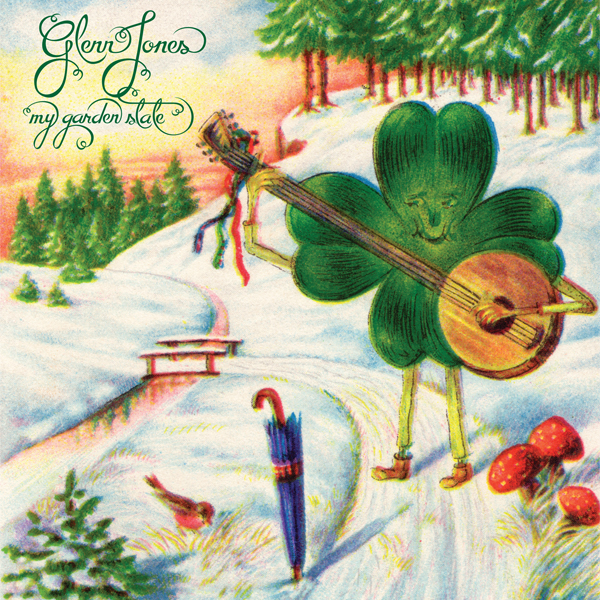 Glenn Jones' music is an omnipresent force. No pretensions or barriers to entry exist in well-executed American primitivism; the baggage is made along with the impression made on the listener. This album is inspired by a host of personal conflicts for Jones, primarily that the recording sessions occurred while he was taking care of his ailing mother in a nursing home in New Jersey. But he never compromises his artistic intent in the midst of trying times, only injecting them with a savvy humanism. The songs he's created are, even in their exact subject matter, timeless and miraculous things.
Glenn Jones' music is an omnipresent force. No pretensions or barriers to entry exist in well-executed American primitivism; the baggage is made along with the impression made on the listener. This album is inspired by a host of personal conflicts for Jones, primarily that the recording sessions occurred while he was taking care of his ailing mother in a nursing home in New Jersey. But he never compromises his artistic intent in the midst of trying times, only injecting them with a savvy humanism. The songs he's created are, even in their exact subject matter, timeless and miraculous things.
The songs of My Garden State are all very personal. Nearly all of them are named for local areas in Jersey visited by Jones during his recording sessions, and all of them are self-authored acoustic songs. A Jersey native, he seems to entertain a conviction for self therapy through the sights and sounds of the state, even as landmarks only grow known through sad circumstances. American primitivism, at the same time, usually frames itself from a populist and anonymous character, and the man often tasked with writing up blurbs for John Fahey or lending material to Jack Rose knows that the real, inimitable pure folk has to show individual conflicts as universal and irresolute. So while it's not without its heart—nor would I ever ask for it to be—this music is still in the truest sense folk, and its messages are common and applicable to anyone who has ever had hardships.
"Alcouer Gardens," the retirement home where his mother had received treatment for Alzheimer's disease, is a somber but uplifting guitar melody, spontaneously composed, which wanders alongside sampled thunderstorms. "Going Back To East Montgomery" is a duet with Meg Baird, whose late song contributions on banjo justify its eight minute running time. Likewise, "Like A Sick Eagle Looking At The Sky" and "Bergen County Farewell" court anthemic territory by way of smartly intoned melodies that are neither pure blues nor unabashedly saccharine. These songs are not "catchy" so much as deeply purposeful. It's as if they're always there, in some space or aura, and Jones simply captured them in his strings.
These compositions chronicle travel and the passage of time, the catharses of forward movement (as signified by Glenn's persistent low-register quarter notes), and a naturalistic simplicity that eschews the often contrived inspirations behind a lot of modern guitar music. Jones extracts a common sentiment among anyone familiar with guitar music, the attraction of a journey, and uses it to his own means in expanding his melodies as tools for evoking emotion and preventing them from becoming dilute. This is music untethered by its era, its context or even the family struggles that drove so much of its inception. It just keeps going. Not until "Chimes II" has everything come to a stop, and it has become a cycle, waiting to be heard again.
samples:
Read More
- Administrator
- Albums and Singles
 This 1982 album was Zoviet France's second release and has come to be known by a few different names over the years, most prominently "Hessian" (an English synonym for burlap).  The reason for that is simple: the original LP was packaged in screen-printed burlap, making it ZF's first foray into the bizarre packaging that they came to be known for in the '80s.  Of course, the music within is also quite bizarre, even by the band's own extremely outré standards.  There are certainly some clear hints of the faux-tribalism and tape loop experiments that would eventually solidify as Zoviet France's aesthetic (for a while anyway), but this enthusiastically primitive affair also features some very unexpected twists, such as absurdist humor, recognizable guitars, howled vocals, and (unbelievably) slap bass.
This 1982 album was Zoviet France's second release and has come to be known by a few different names over the years, most prominently "Hessian" (an English synonym for burlap).  The reason for that is simple: the original LP was packaged in screen-printed burlap, making it ZF's first foray into the bizarre packaging that they came to be known for in the '80s.  Of course, the music within is also quite bizarre, even by the band's own extremely outré standards.  There are certainly some clear hints of the faux-tribalism and tape loop experiments that would eventually solidify as Zoviet France's aesthetic (for a while anyway), but this enthusiastically primitive affair also features some very unexpected twists, such as absurdist humor, recognizable guitars, howled vocals, and (unbelievably) slap bass.
Red Rhino/Charrm
While three decades admittedly passed between this LP and last year's 7.10.12, it is still somewhat remarkable that roughly the same band is responsible for both, as this clattering, humorous, anything-goes chaos could not possibly be more different than the austere minimal drones of Zoviet France's current work.  The only real constants seem to be a fascination with loops, a deep aversion to anything song-like, a penchant for the cryptic, and Ben Ponton.  I suspect Ben and his fellow conspirators (Robin Storey, Peter Jensen, and Lisa Hale, in this case) are probably a bit embarrassed by this period in their development now, but "Hessian" seems like it was probably a lot of fun to record and it makes for a very interesting snapshot of the group's origins.
The most fascinating pieces for me are naturally the more aberrant ones, such as the opening "Ritual," which shares a lot of common ground with precursors like Throbbing Gristle and contemporaries like Test Dept. and SPK.  After a lengthy introduction of humming machine-like noise and instrumental blurts and squawks, a rumbling, detuned bass bulldozes its way into the proceedings along with an insistent thud-thud-thud beat, a strangled-sounding guitar, and plenty of guttural, wordless howling.  It is impressively heavy, but heavy in a messy, unhinged, "noise rock" kind of way, and its formula is never repeated again.
Equally strange and divergent is the closing "Ji Boys," which combines the album's recurring sample of a thickly accented (Indian?) man saying "ok boys" with "funky" slap bass, bongos, dissonantly chromatic piano, and stabs of processed guitar.  Then, around the halfway point, the bottom drops out and it sounds like a post-punk band jamming underwater with a broken drum machine.  In fact, it is so bizarre, anachronistic, and disjointed that it ambiguously rides the blurry line between "inspired deconstruction" and "a bunch of guys messing around in a studio."  In either case, it either sounds like an inept Pop Group rip-off or a hilarious Pop Group caricature.  Curiously, the group thought enough of it to expand it when the album was eventually reissued on CD in 1990.
As bizarre as "Ji Boys" is, it still does not hold a candle to the weirdness of "Bring Hessa," which is little more than the phrase "bring in chiefs!" repeated obsessively.  It could easily be viewed as mere filler or a throw-away bit of lunacy, but it is uniquely compelling nonetheless: the main voice is so maniacal and Muppet-like that it makes it very difficult for the other vocalists to continue without laughing, creating a hesitation/stutter that initially seems like fear or a choked sob.  Then, around the halfway point, the chant amusingly turns into a frenzied "take out chiefs!" until it finally concludes (with the announcement that the chiefs are now gone, of course).  While it definitely offers absolutely nothing musical nor anything more substantial than that at all, I enjoyed it a lot anyway–-it is fun to catch a glimpse of such a mysterious and generally very serious band acting so ridiculously (and so atypically human).
The remaining three pieces ("Mudbast Boys," "Sem Boys," and "Mounw") are a bit more traditionally "Zoviet France," albeit a bit primitive and rooted in rock instrumentation.  "Mudbast Boys" is essentially a beatless, dubbier version of "Ji Boys" based upon insistently repeating "ok boys" sample, while "Mounw" is a very minimal soundscape built upon little more than a low rumble and some periodic metallic clatter.  "Sem Boys," however, is a fairly effective proto-version of ZF's distinctive faux-exoticism despite being executed in the most low-tech possible way (it basically sounds like ragged chanting, someone playing a bucket or hand-drum, and some distinctly unvirtuosic snatches of violin and flute).
As uneven and unsophisticated as it is, "Hessian" is still a remarkably charming effort due to its sheer enthusiasm and naked experimentalism.  It should probably be avoided by the merely curious, as it is not particularly representative of Zoviet France's aesthetic (nor does it come close to approaching their best work quality-wise), but more serious fans will likely find it to be an entertaining historic curiosity.  I also found it to be perversely inspiring, as the band clearly had a muddy vision, dubious musical ability, and rudimentary equipment, but made a messy, scrappy stab at greatness anyway and kept at it until they cohered into the iconic entity they are remembered as today.  To their credit, they certainly cohered quickly, as the more distinctive and superior Garista was actually recorded the same month (December 1981).
Read More
- Administrator
- Albums and Singles
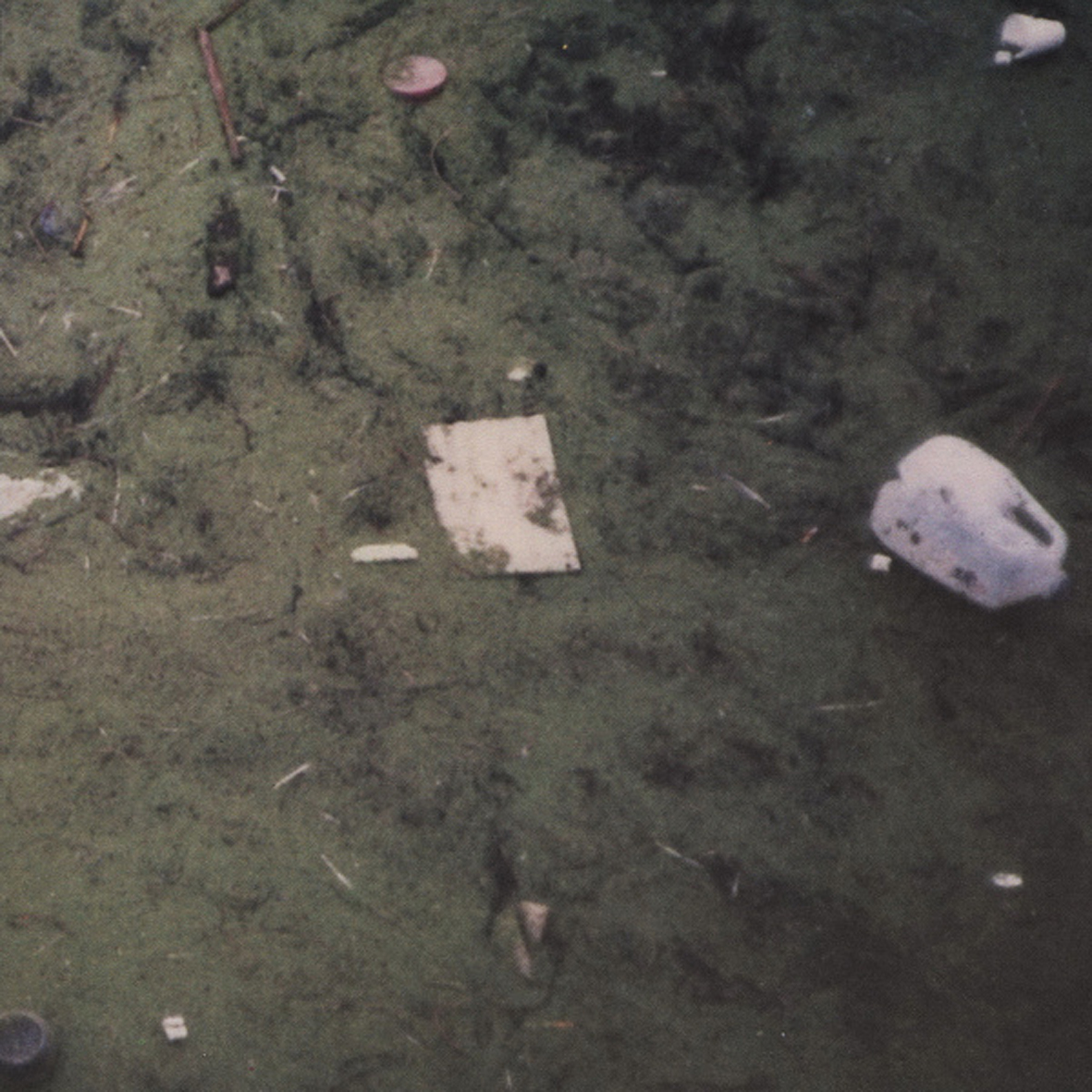 When it was first released in 2008, this massive (and newly reissued) ambient epic met with a rather polarized reception, but has gradually come to be fairly unanimously hailed as a classic.  I am a bit conflicted about that: while it certainly is a fine album, I have seen it favorably compared to Aphex Twin's Selected Ambient Works II, which seems very wrong to me, despite their similarly bleary, haunted feel.  The difference between the two albums is a massive, fundamental one: with Imperial Distortion, Drumm willfully abandons noise, melody, rhythm, and composition to fully embrace the hypnotic power of gently oscillating stasis.  It is an experiment that works beautifully and yields very listenable results, but it is far from the apotheosis of Kevin's work.
When it was first released in 2008, this massive (and newly reissued) ambient epic met with a rather polarized reception, but has gradually come to be fairly unanimously hailed as a classic.  I am a bit conflicted about that: while it certainly is a fine album, I have seen it favorably compared to Aphex Twin's Selected Ambient Works II, which seems very wrong to me, despite their similarly bleary, haunted feel.  The difference between the two albums is a massive, fundamental one: with Imperial Distortion, Drumm willfully abandons noise, melody, rhythm, and composition to fully embrace the hypnotic power of gently oscillating stasis.  It is an experiment that works beautifully and yields very listenable results, but it is far from the apotheosis of Kevin's work.
As far as "classic" albums go, this one had a remarkably humble and convoluted birth, as it was actually conceived of as a compilation to release in place of a different album (also called Imperial Distortion) that Drumm decided not to release.  Feeling uninspired, he began digging through unused studio scraps that he ultimately assembled into a suite of self-proclaimed "go nowhere tracks" spanning 1995 to 2008, which Dominick Fernow liked enough to release.  Despite Drumm's somewhat dismissive (if accurate) assessment of the material and the lengthy span of time involved, Imperial Distortion weirdly feels like a very coherent and deliberate artistic statement that is basically the complete opposite of what Kevin is generally revered for: rather than being dense, sharp, and brutally dynamic, these six pieces are invariably sparse, lengthy, blurry, and muted.  More colorfully, this is the sound of Kevin Drumm lulling me into an uneasy sleep rather than tearing my goddamn head off.
The most divergent piece is the opening "Gullaine-Barre" (named after a very unpleasant strain of ascending paralysis), which initially sounds like it is built from a distant murky recording of gongs or large bells.  Gradually, however, it coheres into a blurry sustained drone that gently throbs and shimmers for nearly 20 minutes.  That aesthetic of "blurry, sustained drones" then continues unabated for most of the next two hours, at which point Kevin finally diverges a second time (abruptly erupting into a grinding blast of white noise).  Still, within those very narrow stylistic confines, some rather mesmerizing and deeply immersive music occurs.
The trick, of course, lies in the details, as Drumm's hazy drones harmonize and oscillate uncomfortably with other noises to create a subtly swaying pulse and simmering low-level tension.  As someone who can find quite a bit of beauty in both pure sound and the way notes interact, wobble, and bleed together, I am very appreciative of the generous time and space Kevin allows his simple motifs to unfold.  Also, not all of the pieces slavishly follow the "go nowhere" aesthetic, yielding a few understated surprises.  In particular, "More Blood and Guts" and "Romantic Sores" stand out, as both unexpectedly give way to comparatively warm and/or melodic passages after ten or fifteen minutes of lulling me into complacency with their sleepily quavering hum.  The closing "We All Get It in the End" is quite striking as well, but that is entirely due to its sheer brooding menace rather than any sort of twist.
Mostly, however, Imperial Distortion is devoted to minimal, uneasily close harmonies and the subtle pleasures of oscillation, which are very absorbing in their own right and display an impressive ear and knack for restraint on Kevin's part.  While at its core this is basically just another drone album rather than anything particularly revolutionary, Drumm's use of extreme song durations and his textural propensity towards hiss and tape murk still manage to elevate these pieces into something fairly distinctive (think Phill Niblock, but with a healthy dose of blurriness and vague dread).  Given the healthy number of antecedents in this vein, I would definitely stop short of proclaiming Imperial Distortion unique or hailing it as any kind of masterpiece, but it is unquestionably a very good drone album by a very great noise artist.
 
Read More
- Administrator
- Albums and Singles
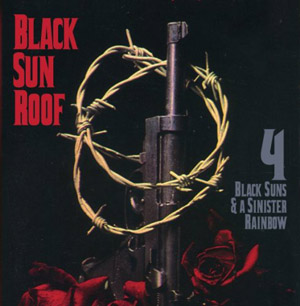
Matthew Bower is best known with his work in the noise rock (more emphasis on the noise) band Skullflower, but closely followed with his formless output as Total. The reason I am mentioning both of these is that this new guise, with partner Samantha Davies, is some sort of mutant hybrid of these two: filth ridden lo-fi feedback with the occasional hint of melody or rhythm that somehow sneaks through. Between these two discs, the duo stick with this blueprint, occasionally drifting fully into one direction or the other, but always resulting in material that screams to be blasted as loud as possible.
The two discs that make up 4 Black Suns & A Sinister Rainbow have their own individual titles, but I can not for the life of me figure out if there is supposed to be any thematic or conceptual unity to each work.Truffled Abyss begins with the two-part punch of "Perfumed Pressure" that comes across like Skullflower after a nuclear blast.Detuned guitars clash and feedback with reckless abandon as some sort of undulating beat lurks beneath the radioactive fallout, attempting to corral the chaos without ever really succeeding in doing so.
"Monstrous Souls" also takes this challenge on, mostly an unidentifiable mass of sound that could be guitar, synth, or electronics, which have a barely perceptible sense of order that is eventually pushed out to leave only dissonance.On "Glassy Penetralia," the opening riff nods back to Bower's more structured works, but within a black metal squall and unstructured noise context.
Perhaps on Werewolf Universe things have a slightly more prominent sense of order and cohesion, but I think that may be a stretch.Both "Chandelier Heat" and "R U Loathsome" build upon loops of guitar noise that bring some semblance of structure and order, but in the loosest sense of the word.The latter especially excels, with the rhythmic bits falling below a slow flowing wall of lava like guitar.The mid-range noise on "Thunderbolt Cumshot Axis" is so gloriously unrestrained that the whole thing manages to cross over from pure chaos to inviting beauty, which is no easy feat.Perhaps the biggest surprise comes on "Fangs of Ego," which is mostly pure, unadulterated Skullflower riffing atop a stuttering, filtered drum machine that keeps everything rather unsettled, so it never fully comes together as the riff monster it could be.
The two albums that make up 4 Black Suns & A Sinister Rainbow are extremely ugly and unpleasant, but in the best possible way.Bower and Davies revel in the nastiest, dirtiest noises they can coax out of their instruments, and with that and the slightest concessions to rhythm, Black Sun Roof! has produced one of those rare noise works that demands to just be played at the loudest level, which I have done much to my neighbors’ chagrin more than once.And all the while I know I had a big, dumb smile on my face at the sheer spectacle of what I was hearing.
samples:
 
Read More
- Administrator
- Albums and Singles
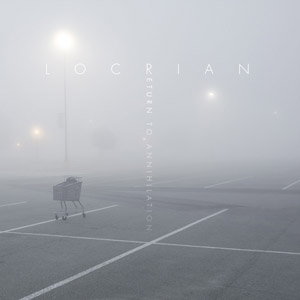 As one of the handful of truly innovative artists to spring off from the drone metal template, the trio of Locrian had previously been rather prolific, tweaking and honing their sound to something singular and unique amidst a flurry of singles and split releases. However, other than a few high profile collaborations of late (Mamiffer, Christoph Heemann), they have been rather quiet since 2011's The Clearing. Return to Annihilation, the first new material after signing to Relapse, proves that this time and effort was well spent, perfecting their sound in ways that are both more accessible, but also pushing the more abstract moments they have been working with since the beginning even further.
As one of the handful of truly innovative artists to spring off from the drone metal template, the trio of Locrian had previously been rather prolific, tweaking and honing their sound to something singular and unique amidst a flurry of singles and split releases. However, other than a few high profile collaborations of late (Mamiffer, Christoph Heemann), they have been rather quiet since 2011's The Clearing. Return to Annihilation, the first new material after signing to Relapse, proves that this time and effort was well spent, perfecting their sound in ways that are both more accessible, but also pushing the more abstract moments they have been working with since the beginning even further.
 
Most pronounced on the Territories album, as well as the collaboration with Horseback, the trio of Terence Hannum, André Foisy and Steven Hess began pushing their noise tinged sound into a more conventionally metal framework, while retaining both their sense dissonance as well as a healthy dose of early 1980s post punk.This is the same band that snuck the chords to "A Forest" into one of their earliest drone works, so this comes as no surprise.
Therefore, Hannum's synth strings, Hess' taut drumming and Foisy's grimy guitar leads on opener "Eternal Return" melding together like a doom laden cast off from New Order's Movement is no surprise.However, it is in its execution that the genius truly lies: each member’s contribution beautifully builds upon the others’, at times resembling one of the best tracks Jesu has never recorded.
The title song also carries this sensibility: a tight synth/drum lead mixed with overdriven low end and distant monastic chants.After a few minutes it all falls away to leave a beautiful electronic drone and Foisy's grinding black metal guitar before reforming as a combination of both.Here that more conventionally musical sensibility is tempered by the best elements of progressive rock, without any of the unnecessary pretense or haughty drama that are best ignored.The prog tendencies are also represented well in the 15 minute closer "Obsolete Elegies," in which up front piano and acoustic guitar are supplanted by dissonant scrapes and far off martial drumming.The '70s keyboard solos and sparse guitar that follow within the piece’s ample duration belies the closing blast of pure pounding metal.
Other moments hearken back to the band’s sparser, more experimental days, such as the pulsing analog synth and drifting guitar of "A Visitation From the Wrath of Heaven" that also builds to a beautifully bombastic climax."Panorama of Mirrors" especially feels like a throwback to their earliest releases, with the blackened guitar, noisy keyboards, and Hannum's tortured screams leading the way through bleakness and haze.A similarly repeating, mantra like sound defines "Exiting the Hall of Vapor and Light," albeit more delicate and nuanced than their older works.
The moments in which Locrian embrace melody, structure, and convention are so perfectly arranged that it feels like the natural direction they should be going in.Previous efforts where they overtly flirted with progressive and krautrock sounds were always some of my favorite works by them, so this culmination is exactly what I had hoped.However, the more accessible sounds are balanced throughout with abstraction and experimentation, recalling their past efforts with an even greater sense of refinement.
samples:
 
Read More

